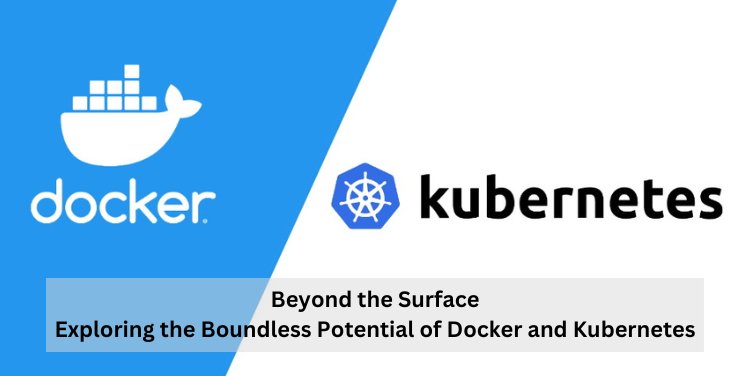Beyond the Surface: Exploring the Boundless Potential of Docker and Kubernetes

In the ever-evolving landscape of software development and deployment, technologies like Docker and Kubernetes have revolutionized the way applications are built, shipped, and managed. Containers, the fundamental building blocks of these technologies, offer a lightweight and efficient solution to package and run applications consistently across various environments. In this blog, we'll explore the concepts of containers and delve into the world of Docker and Kubernetes, two pivotal tools in the container ecosystem.
Containers: The Basics
Containers provide a lightweight and portable way to encapsulate an application and its dependencies, ensuring consistency across different environments. Unlike virtual machines, containers share the host operating system's kernel, making them more resource-efficient and faster to start.
-
Isolation and Portability: Containers encapsulate an application along with its dependencies, libraries, and binaries, ensuring that it runs consistently across different environments. This isolation eliminates the common problem of "it works on my machine."
-
Resource Efficiency: Containers consume fewer resources compared to virtual machines since they share the host OS kernel. This efficiency makes them scalable and enables running more containers on the same hardware.
Docker: Containerization Made Easy
Docker, the pioneer in containerization, has become synonymous with the technology itself. It simplifies the process of creating, distributing, and running containers. Key features of Docker include:
-
Docker Images: Docker images are the blueprints for containers. They consist of the application code, runtime, libraries, and dependencies. Images are stored in registries, like Docker Hub, making them easily shareable and reproducible.
-
Docker Containers: Containers are instances of Docker images. They run in isolated environments, ensuring that the application behaves consistently, regardless of the host environment.
-
Dockerfile: Dockerfile is a script used to build Docker images. It contains instructions to assemble the image layer by layer, defining the environment, dependencies, and application code.
-
Docker Compose: Docker Compose is a tool for defining and managing multi-container Docker applications. It allows you to specify the entire application stack in a YAML file, making it easy to manage complex deployments.
Kubernetes: Orchestrating Containerized Applications
While Docker simplifies containerization, managing a fleet of containers in production requires a robust orchestration tool. Kubernetes, often abbreviated as K8s, emerged as the de facto standard for container orchestration. Key Kubernetes features include:
-
Orchestration: Kubernetes automates the deployment, scaling, and management of containerized applications. It ensures high availability, fault tolerance, and efficient resource utilization.
-
Nodes and Pods: In Kubernetes, a node is a physical or virtual machine, and a pod is the smallest deployable unit that represents a container. Multiple pods can run on a single node.
-
Deployments: Deployments define how applications are updated and rolled back. They allow you to declaratively manage the desired state of your application.
-
Services: Kubernetes Services provide networking and load balancing for containers. They enable communication between different parts of an application and external users.
-
ConfigMaps and Secrets: ConfigMaps and Secrets are used to decouple configuration details from application code. They allow for dynamic configuration updates without modifying the container image.
The marriage of Docker and Kubernetes has transformed the software development landscape, offering a powerful combination for building, shipping, and scaling applications. Containers provide consistency and efficiency, while orchestration tools like Kubernetes automate the complex task of managing containerized applications in production. As technology continues to advance, these containerization and orchestration technologies will play an increasingly pivotal role in shaping the future of software deployment. Whether you are a developer, system administrator, or IT professional, embracing containers and container orchestration is key to staying competitive in the fast-paced world of modern software development.
What's Your Reaction?















